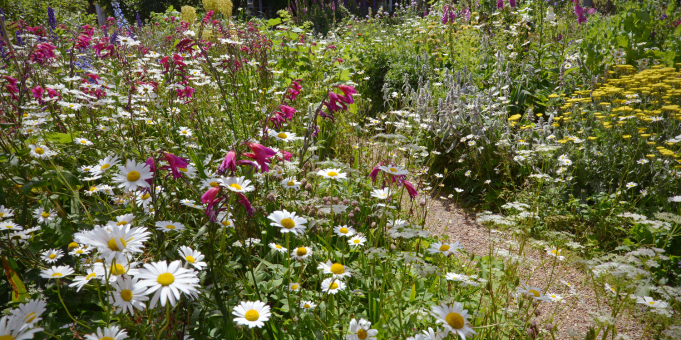During the COVID pandemic, the “kill your lawn” idea caught a wave in the mainstream media, from the New York Times (2022) and the Boston Globe (2020, 2022) to the Washington Post (2023) and Men’s Journal (2020)—which notably ran its “kill your lawn” story in the “Adventure” section.
Because the point of rolling back turf grass is to make room for native plants, the trend reveals how many people are grasping the importance of native plants. But in the post- lawn moment, many of us struggle with how to replace their turf grass, says Nasami Farm Nursery Manager Alexis Doshas.
“People are eager to do the right thing, but it can be hard to reimagine a space that has been the same for a long time,” says Doshas, who, in her popular lecture Native Lawn Alternatives, has been guiding people through the transition from turf desert to habitat garden for seven years. “And if someone is just getting acquainted with native plants, they don’t know what’s out there and how the plants will work on their site.” This can be true even for experienced gardeners who are used to working with exotic plants, she says.
If you fall into any of these categories, you’re in luck, because Doshas has graciously agreed to share the key takeaways from her class here.
The above article was published in Native Plant News, the membership magazine of Native Plant Trust and is reprinted here with permission.


Recently on Twitter